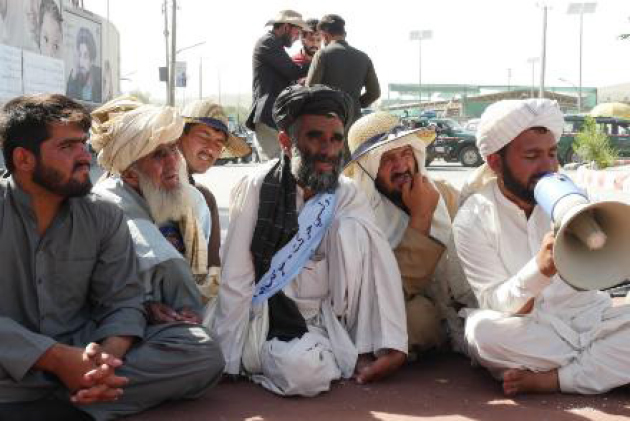KABUL - Peace activists said they hope religious scholars and tribal elders will help open the doors of peace.
Helmand Peace Convoy activists said on Tuesday they plan to organize a meeting with tribal elders and religious scholars in order to secure a ceasefire with the Taliban.
The head of the peace convoy Iqbal Khyber said the aim of the meeting will be to get all sides involved in the war to agree to a one-year truce.
“We want to open the door of peace, meetings and talks with the Taliban through tribal elders and religious scholars. The tribal elders and religious scholars will mediate in this respect in order to start talks (with the Taliban),” Khyber told TOLO news on Tuesday.
Members of the campaign said representatives from the US embassy in Kabul have asked to talk to them but that they have decided to share their demands with the US people and with Congress in a letter.
“Our demand from the US people and US Congress is that they review and assess activities of their forces in Afghanistan. The people of Afghanistan are in a bad situation,” said Mohammad HanifTaraki, a member of the peace movement.
The planned meeting will be held near the US embassy in Kabul on Thursday, activists said.
According to them, once they move on from their sit-in protest outside the US embassy, they will make their way to the Russian embassy in Kabul.
From there they will continue their protest outside the embassies of Pakistan, Iran, Saudi Arabia and Britain.
Some members of the peace convoy have meanwhile fallen ill due to the heat and continuous exposure to the sun following their seven-day sit in protest.
The activists, who are at Massoud Circle in Kabul city center have spent the last week sitting on mats placed on the asphalted road. With no shelter, the protest has taken a toll on the group, they said.
Ajmal, one member of the peace convoy, said he had been treated for heat exhaustion by a doctor and is now sitting in the shade of the Ahmad Shah Massoud minaret at the circle.
“I had a headache. I visited the doctor. He asked me to avoid sitting in the sun. He also said I had a throat infection,” said Ajmal.
Sit-in Protest Started In Helmand
The peace activists initially launched their sit-in protest in Lashkargah City after a suicide bombing outside a stadium back in March. About a month later, a group of eight protestors left Helmand on foot for Kabul.
The activists walked through towns and villages, crossed provinces and met with local residents along the way for 38 days. And as they progressed, so their numbers grew.
About 700km later, the group of eight had grown to an estimated 100. They arrived in Kabul on June 18 and handed over demands for a ceasefire and peace to both the Afghan government and the Taliban.
The group gave the Taliban three days in which to answer and said if they failed to do so, they would embark on sit in protests outside diplomatic offices and missions in the capital.
The Taliban’s deadline passed without any response. The activists then held a three-day sit-in protest outside UNAMA’s office in Kabul. They sent a letter to the UN Secretary General António Guterres in which they asked him not to remain indifferent towards ending the ongoing war in Afghanistan.
From there, they moved on to the US embassy – where they have been for the past seven days.
The activists, whose ages range from 17 to 65, come from all walks of life and include students, athletes and farmers among others.
The growing efforts for peace by members of the public and the Afghan government comes amid ongoing conflict. On Sunday, a suicide bombing left 19 people dead in Jalalabad City in the east of Afghanistan – the majority of whom were from the Afghan Hindu and Sikh community. (Tolo news)
Home » Afghanistan » Peace Convoy to Hold Meeting with Religious Scholars
Peace Convoy to Hold Meeting with Religious Scholars

